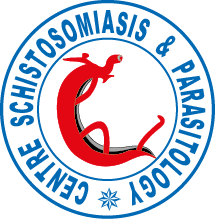Compatibility of Schistosoma mansoni Cameroon and Biomphalaria pfeifferi Senegal
Abstract
The vectorial capacity of Biomphalaria pfeifferi from Ndiangue, Senegal, was investigated with an allopatric isolate of Schistosoma mansoni from Nkolbisson, Cameroon. The snail infection rate after exposure to a single miracidium per snail (MD1) was 56·3%, and 91·6% for snails exposed to 5 miracidia per snail (MD5). The minimum pre-patent period was 21 days. The mean total cercarial production for the MD1 group was 18511 cercariae per snail, and 9757 cercariae for the MD5 group. The maximum production of cercariae for 1 day was 4892 observed in a snail from the MD1 group at day 43 post-infection. The mean longevity of snails was higher in group MD1 (88 days p.i.) than in group MD5 (65 days p.i.). The chronobiological emergence pattern revealed a circadian rhythm with one shedding peak at mid-day. Comparisons are made with the vectorial capacity of the sympatric combination of B. pfeifferi Senegal/S. mansoni Senegal.
